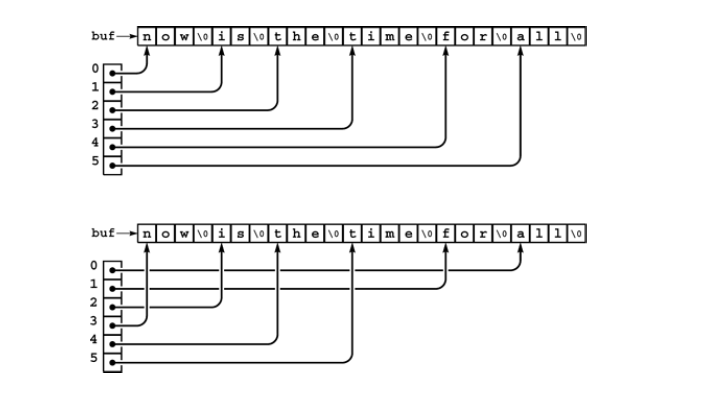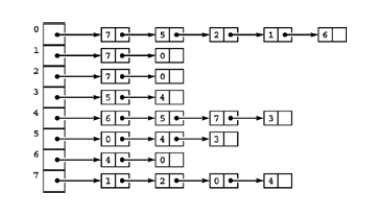7-Compound Data Structures
Compound Data Structures
-
Complex structures like array of array (2D Array), arrays of lists, arrays of strings, and so forth are also possible.
-
2D Array is just notation convenience because ultimately its stored as one-dimensional array
-
Two-dimensional array allocation
This function dynamically allocates the memory for a Two-dimensional array, as an array of arrays. We first allocate an array of pointers, then allocate memory for each row. With this function, the statement
int **a = malloc2d(M,N); // allocates an MxN array of integers int **malloc2d(int r , int c) { int **t = new int*[r]; for(int i =0 ; i<r ; i++) t[i] = new int[c]; return t; } -
String Sort
When processing string we normally use pointers because they are easy to manipulate

#include <iostream.h> #include <stdlib.h> #include <string.h> int compare ( const void *i , const void *j) {return strcmp(*(char **)i , *(char **)j);} //dereferanced strings for comparisions int main() { const int Nmax = 1000; const int Mmax = 10000; char* a[Nmax]; int N; // This is pointer to each string char buf[Mmac]; int M =0; for ( N=0 ; N< Nmax ; N++){ a[N] = &buf[M]; //Stores address of buffer if((cin>>a[N])) break; M+=strlen(a[N])+1; } qsort(a,N,sizeof(char*),compare); //quicksort for(int i =0; i<N ;i++) cout<< a[i] << endl; } -
A graph is a fundamental combinatorial object that is defined simply as a set of objects (called vertices) and a set of connections among the vertices (called edges).
-
Adjacency - matrix graph representation
Its just a simple Undirected graph represented using matrix

#include <iostream.h> int main() { int i,j, adj[V][V]; for (i =0; i<V;i++) for (j=0; j<V;j++) adj[i][j]=0; for(i=0;i<V;i++) adj[i][i]=1; //self connection while(cin>>i>>j){ adj[i][j]=1; adj[j][i]=1; } } -
Adjacency-lists representation of a graph

#include <iostream.h> stuct node { item v; node* next; node(int x, node* t) { v=x; next=t; } }; typedef node *link; int main(){ int i,j; link adj[V]; for(i=0;i<V; i++) adj[i]=0; while(cin>> i >>j){ adj[j] = new node(i,adj[j]); adj[i] = new node(j, adj[i]); } }